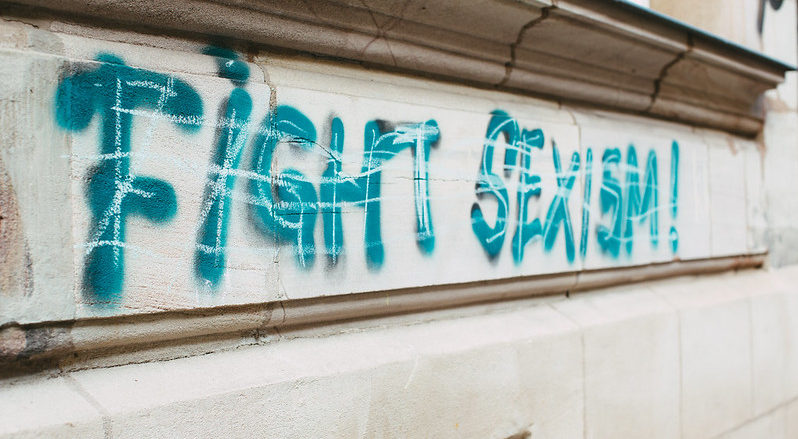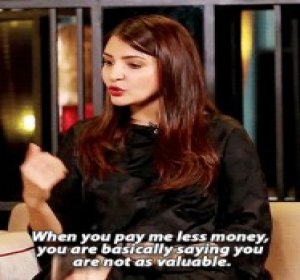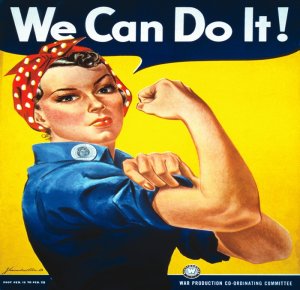By Shriya Tandon

From rape jokes trivialising the existence of a rape culture that is layered with patriarchy and a blatant denial of its presence, to overtly sexist dialogues very casually delivered by the apparent doyens of this Indian film industry, Bollywood has not only encouraged but also romanticised just enough instances of unrepentant sexism to drown itself in them. ‘Pyar se de rahe hai, rakh lo, varna thappad maarke bhi de sakte hai’ is a rather famous dialogue delivered by none other than the flag bearer of male chauvinism in Bollywood – Salman Khan. Akshay Kumar’s role in ‘Toilet: Ek Prem Katha’ is one of the hundred other roles routinely used by the film industry to dignify and even exalt stalker behaviour and similarly, song lyrics such as ‘Tu haan kar ya naa kar, tu hai meri Kiran’ both explicitly attempt to refute the idea of consent and normalise forcing decisions on females. Let’s not forget the reel life stereotyping of characters based on standards set by the global society pertaining to what is strictly feminine and masculine with no space for anything or anyone in between.

Bollywood has endeavored to portray and normalise toxic ideas about femininity and masculinity all through its history. Besides desiring most male actors to be bulky and physically intimidating, female actors are also expected to be size zero and beautiful and it doesn’t end there. It is the very acceptance of this sexism that demands male actors to often be cast as knight in shining armours and are therefore expected to lack vulnerability and mediocre physiques. Similarly, female characters are unapologetically made the bum of all sexist jokes and toxic comments. Cinema is a major source of entertainment for adolescents and young adults, which is also the period in our lives that lays the foundation for our personality and sets the direction in which it will develop. Being exposed to an entertainment industry that takes pride in perpetuating stereotypes which have no rational basis in reality severely punctures their self-exploration and people end up confirming to unreasonable norms. Far from being an ally to the LGBTQ+ community, Bollywood has time and again been party to typecasting members of this community as ‘comic relief’. Let alone showing acceptance to the heterogeneity that this community brings, Bollywood has repeatedly downplayed the presence of LGBTQ+ people.

Let’s turn to the very obvious sexist ageism in Bollywood which worships male actors regardless of their age and unlike female actors – stereotypes them after they reach a certain milestone and not to forget the insufferable presence of huge age gaps between some couples on screen. Be it Aamir Khan being paired against Kareena Kapoor in 3 Idiots or a 54-year-old Anil Kapoor being paired with a 32-year-old Lara Dutta, there are multiple examples of such unbelievable age differences. As part of a progressive society, the critique is not pointed at lovers being years apart but rather at how if the dynamics are reversed, the plot loses its lustre and the audience loses interest all the while chanting how the age gap is a jibe at the functioning of our society and the role of women in it. While for most male actors, their glory begins being celebrated after they have hit the half-century mark, by that age the female actors can be found looking to make a comeback or searching for roles other than those of a ‘mother’ or a ‘grandmother’.It is no secret that the industry has indeed made attempts at being more unconventional and progressive. Thappad, Raazi, Chhapaak, Lust Stories, and Stree are few of the many more Bollywood productions which deliver stellar plots central to women in one way or another and appear to be Bollywood’s approach to seeking redemption. It is agreeable that we have indeed progressed but we still have a long road to on-screen gender equality before us. Actors such as Deepika Padukone, Anushka Sharma, Kalki Koechlin and Priyanka Chopra are few among the many others who are taking strides in reel life women empowerment and succeeding at it. These women are looking to break gender stereotypes formerly established by Bollywood while also endeavoring to feature in films which helps women’s movements world over by screening powerful narratives. In addition to making this industry a platform safe for and open to people of all genders, their actions will hopefully lead to making this entertainment industry impartial and fair after all. However, it goes without saying that they do need the support of the entire film fraternity to bring their visions to life. While actors have major influence over audiences, much power lies in the hands of directors and producers who choose the narrative that gets to be screened. Not being part of the problem is not enough, people in positions of power need to step up their game and actively be a part of the solution.

